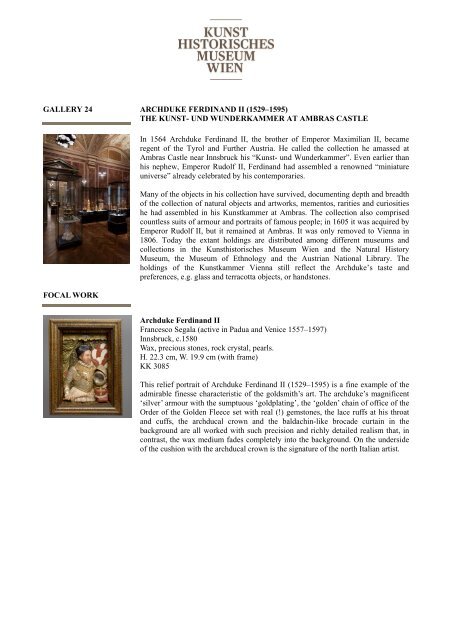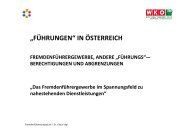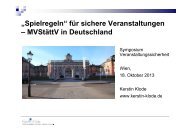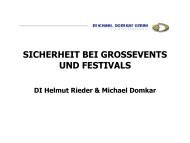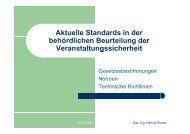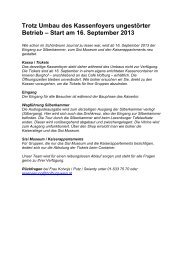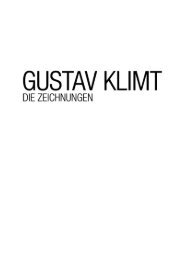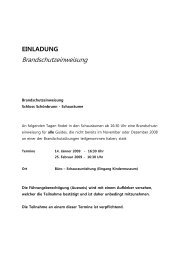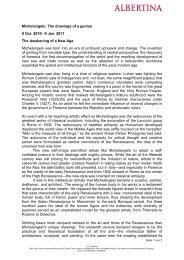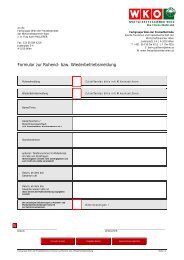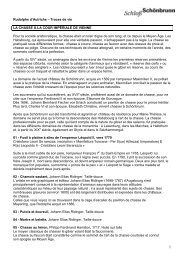kunstkammer vienna the cradle of the museum - Freizeitbetriebe ...
kunstkammer vienna the cradle of the museum - Freizeitbetriebe ...
kunstkammer vienna the cradle of the museum - Freizeitbetriebe ...
Create successful ePaper yourself
Turn your PDF publications into a flip-book with our unique Google optimized e-Paper software.
GALLERY 24 ARCHDUKE FERDINAND II (1529–1595)<br />
THE KUNST- UND WUNDERKAMMER AT AMBRAS CASTLE<br />
FOCAL WORK<br />
In 1564 Archduke Ferdinand II, <strong>the</strong> bro<strong>the</strong>r <strong>of</strong> Emperor Maximilian II, became<br />
regent <strong>of</strong> <strong>the</strong> Tyrol and Fur<strong>the</strong>r Austria. He called <strong>the</strong> collection he amassed at<br />
Ambras Castle near Innsbruck his “Kunst- und Wunderkammer”. Even earlier than<br />
his nephew, Emperor Rudolf II, Ferdinand had assembled a renowned “miniature<br />
universe” already celebrated by his contemporaries.<br />
Many <strong>of</strong> <strong>the</strong> objects in his collection have survived, documenting depth and breadth<br />
<strong>of</strong> <strong>the</strong> collection <strong>of</strong> natural objects and artworks, mementos, rarities and curiosities<br />
he had assembled in his Kunstkammer at Ambras. The collection also comprised<br />
countless suits <strong>of</strong> armour and portraits <strong>of</strong> famous people; in 1605 it was acquired by<br />
Emperor Rudolf II, but it remained at Ambras. It was only removed to Vienna in<br />
1806. Today <strong>the</strong> extant holdings are distributed among different <strong>museum</strong>s and<br />
collections in <strong>the</strong> Kunsthistorisches Museum Wien and <strong>the</strong> Natural History<br />
Museum, <strong>the</strong> Museum <strong>of</strong> Ethnology and <strong>the</strong> Austrian National Library. The<br />
holdings <strong>of</strong> <strong>the</strong> Kunstkammer Vienna still reflect <strong>the</strong> Archduke’s taste and<br />
preferences, e.g. glass and terracotta objects, or handstones.<br />
Archduke Ferdinand II<br />
Francesco Segala (active in Padua and Venice 1557–1597)<br />
Innsbruck, c.1580<br />
Wax, precious stones, rock crystal, pearls.<br />
H. 22.3 cm, W. 19.9 cm (with frame)<br />
KK 3085<br />
This relief portrait <strong>of</strong> Archduke Ferdinand II (1529–1595) is a fine example <strong>of</strong> <strong>the</strong><br />
admirable finesse characteristic <strong>of</strong> <strong>the</strong> goldsmith’s art. The archduke’s magnificent<br />
‘silver’ armour with <strong>the</strong> sumptuous ‘goldplating’, <strong>the</strong> ‘golden’ chain <strong>of</strong> <strong>of</strong>fice <strong>of</strong> <strong>the</strong><br />
Order <strong>of</strong> <strong>the</strong> Golden Fleece set with real (!) gemstones, <strong>the</strong> lace ruffs at his throat<br />
and cuffs, <strong>the</strong> archducal crown and <strong>the</strong> baldachin-like brocade curtain in <strong>the</strong><br />
background are all worked with such precision and richly detailed realism that, in<br />
contrast, <strong>the</strong> wax medium fades completely into <strong>the</strong> background. On <strong>the</strong> underside<br />
<strong>of</strong> <strong>the</strong> cushion with <strong>the</strong> archducal crown is <strong>the</strong> signature <strong>of</strong> <strong>the</strong> north Italian artist.


